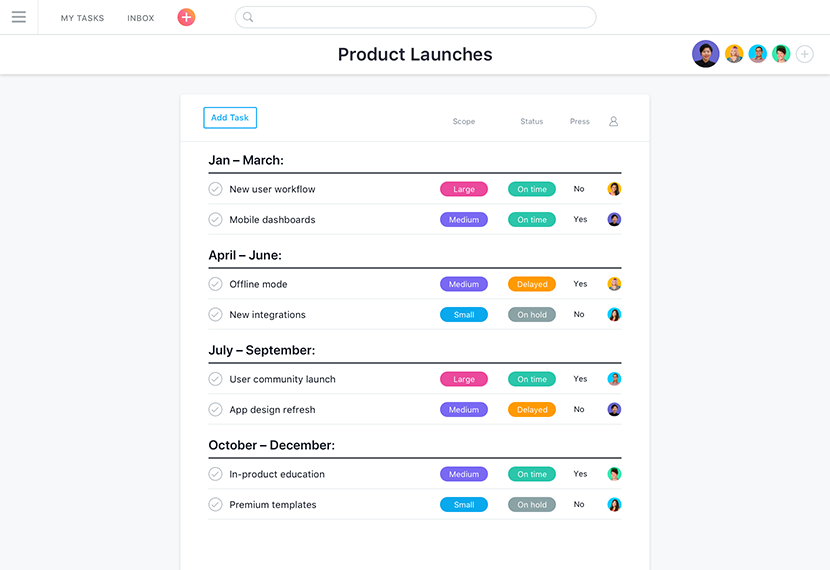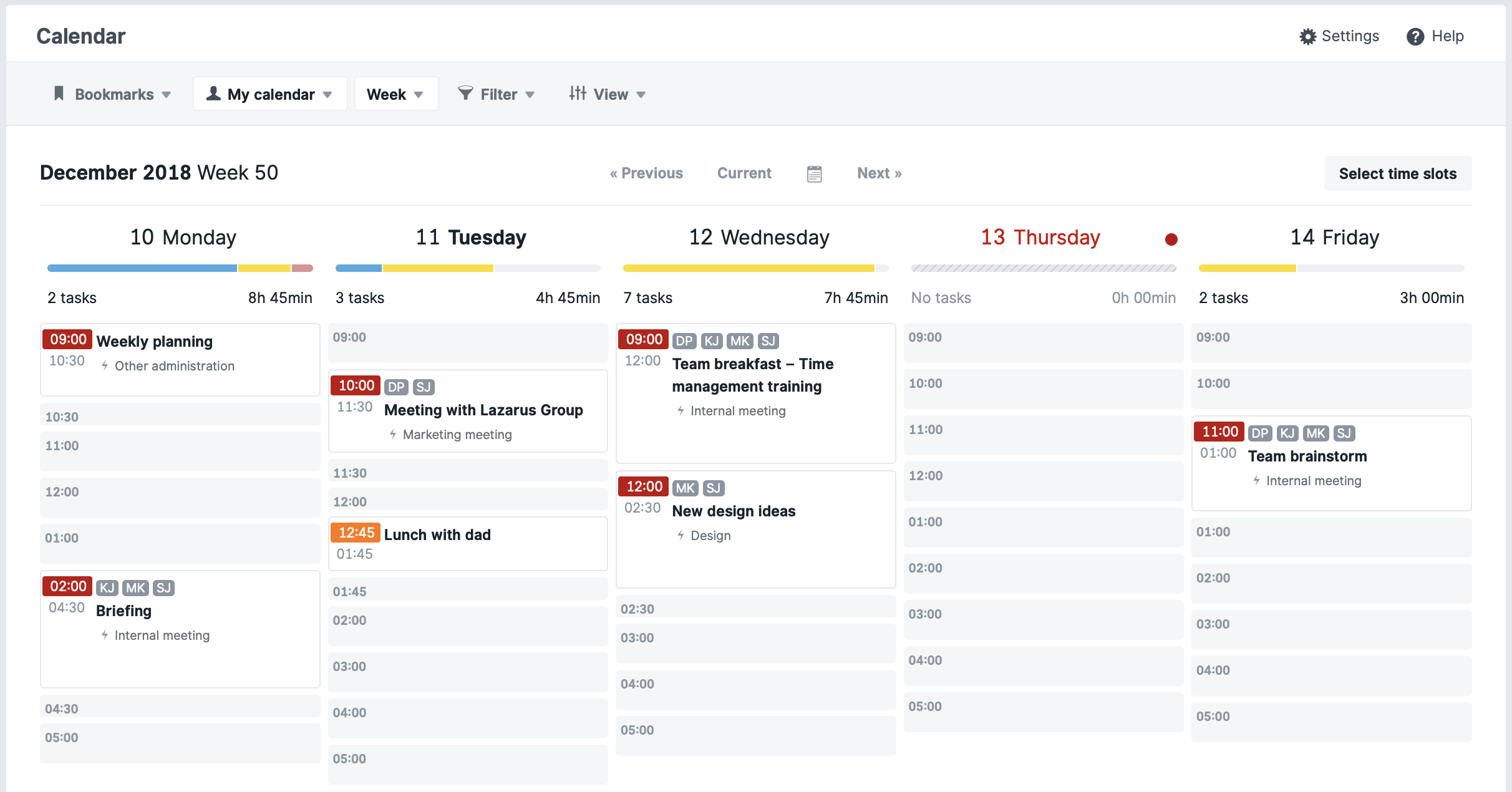Task management tools can improve an individual’s workflow and a team’s efficiency. But the tool has to include the right features to meet the types of efficiency you’re trying to achieve. These six features produce significant benefits for teams of all sizes.
When you’re ready to find the best task management software products with these features, visit our Task Management Software Guide, where you can find many of the most popular options out there.
1. Subtasks

While a simple to-do list can enumerate individual tasks, each of the tasks are inherently weighted the same. Subtask features let the user assign tasks to nest under other tasks. Subtasks can take the form of a checklist within the task, connected dependent tasks in a Gantt chart, or they may have other structures. The feature lets users map out the individual steps that must happen for the larger task to launch successfully.
Subtasks give a visual representation of how a task progresses. Imagine a new product that must go through three rounds of planning with approvals after each one. This helps both the individual user and any stakeholders that may have access do quick checks without interrupting workflows.
Also Read: Wrike vs. Asana Review
2. Alerts and notifications

Alerts and notifications can remind users of upcoming due dates, overdue items, and approvals that need attention. Task management tools now use several different common methods of communication for alerts
- Emailed reminders of the tasks
- App icon notifications
- Text messages
- Home screen mobile app notifications
- In-app reminders
These tools help individuals remember that they have tasks nearing a due date or that they owe a task owner an action. These tools raise use of the task management tool, which has the dual advantage of helping people be more productive and reminding people to use the software.
3. Reporting and analytics

Reporting dashboards and analytics tools help project managers and task management software users better understand their productivity day to day and over the course of projects. This is especially helpful for task management software users, as tasks typically disappear from lists after they’re completed.
Reporting and analytics dashboards can help show progress toward the overall goal and put the day’s task completion into perspective against historical or team data.
Also Read: Trello vs. Jira: Top Agile Project Management Tool (2023)
4. Automation and workflows

Automation and workflow tools work on a basis of trigger and action. The user specifies a trigger in the software—like a tagged item that is moved from a “working” to “in review” state—and an action that will be performed when the trigger is achieved—such as the item being sent to a manager for approval. In other words, for these examples, the automation instructs the task management software to automatically notify the manager when it’s ready for review.
Automations save time on manual, repetitive processes. In the previous instance, it saves the time it takes to switch apps and email the asset to the manager for approval. While sending a single email may take under a minute, the cumulative effect of sending that notification several times a day over the course of years saves a significant amount of time—and that’s not including the time cost of regular focus interruptions.
Automations are also credited for keeping projects on track in the cases where people may forget to send an item for approval or follow up on the item. Notifications can often be set to remind approvers of their outstanding tasks.
5. Task visualization tools

While the simplest of task management software maintains a list of tasks to complete, this is easily duplicated in a spreadsheet or on paper. To add value beyond a list view, many task management tools provide several visualization methods to enhance the way teams can assess a project’s progress.
Look for task management software that includes a visualization that works best for the type of work you do. Perhaps viewing task due dates in a calendar is most helpful. Other teams might find benefit from a Gantt chart, which shows subtask start and end dates and can show how progress between subtasks is dependent on one another.
Another popular visualization is the kanban board, which gives each task a card that a person can move to different lists on the board that indicate varying states of completion.
Also Read: Best Kanban Tools & Software
6. Integrations to connect apps

Our increasingly digital world relies on connections between apps to help us ensure priorities are appropriately aligned and work gets completed on time. Many task management apps connect to other highly useful software tools that help teams communicate, remind users of outstanding tasks, and facilitate data sharing.
Look for task management software that integrates directly with the business and productivity apps you already use. Consider whether the task management software can send alerts to your collaboration software, say Slack or Teams. Can you automatically add due dates to your Google Calendar or integrate with a word processing tool like Microsoft Word?
If your task management software doesn’t have a native integration with your most-used software, like your CRM, HR, or ERP software, it might be worthwhile for your team to inquire about an API integration. A competent software developer should be able to connect to an API and build simple tools that connect your data.
Choose the right task management software
The task management software vendors pictured above are popular choices, but they may not have the right features for your team’s workflow. To explore more solutions, hop over to our Task Management Software Guide for a list of software favorites in the industry.





